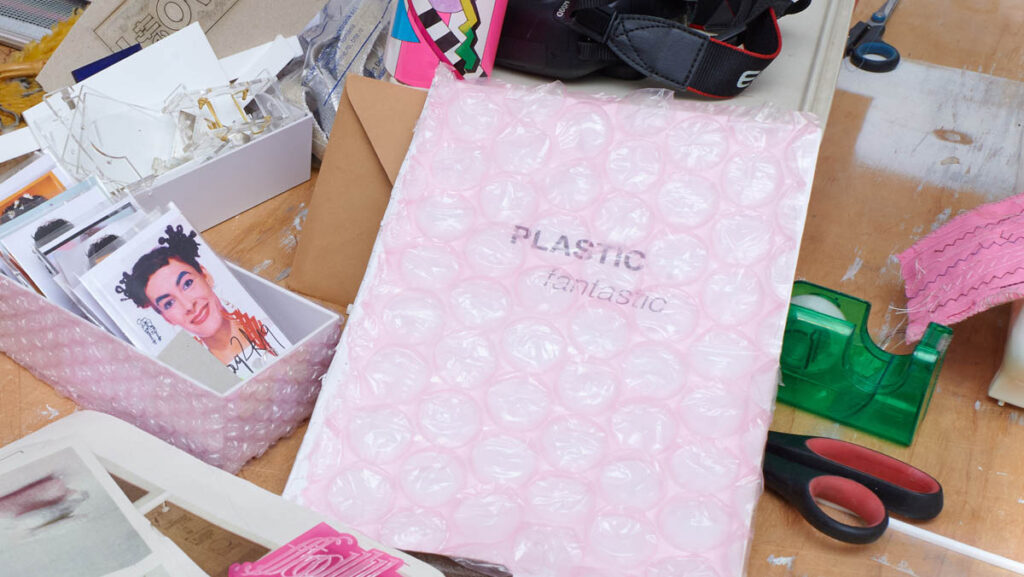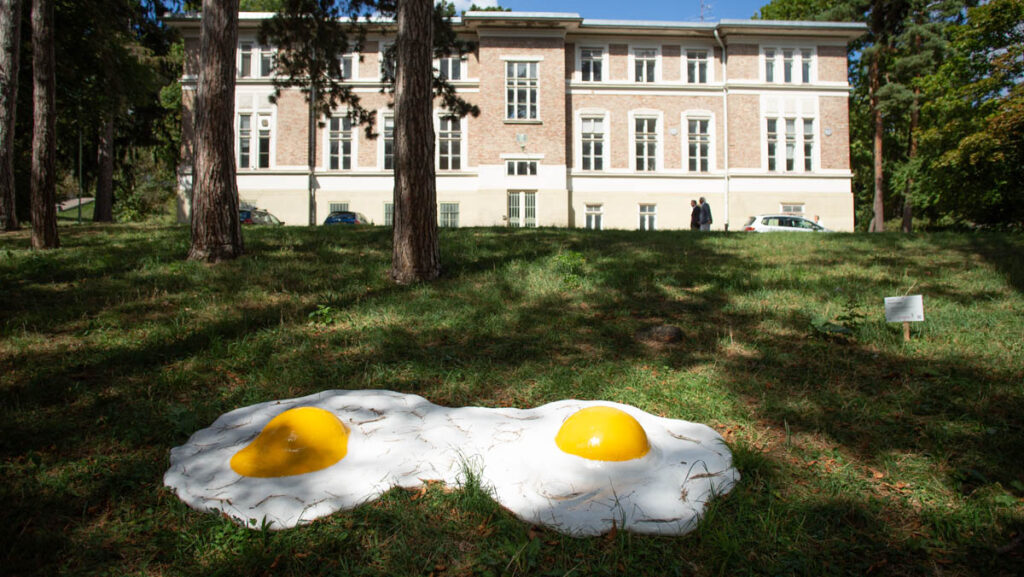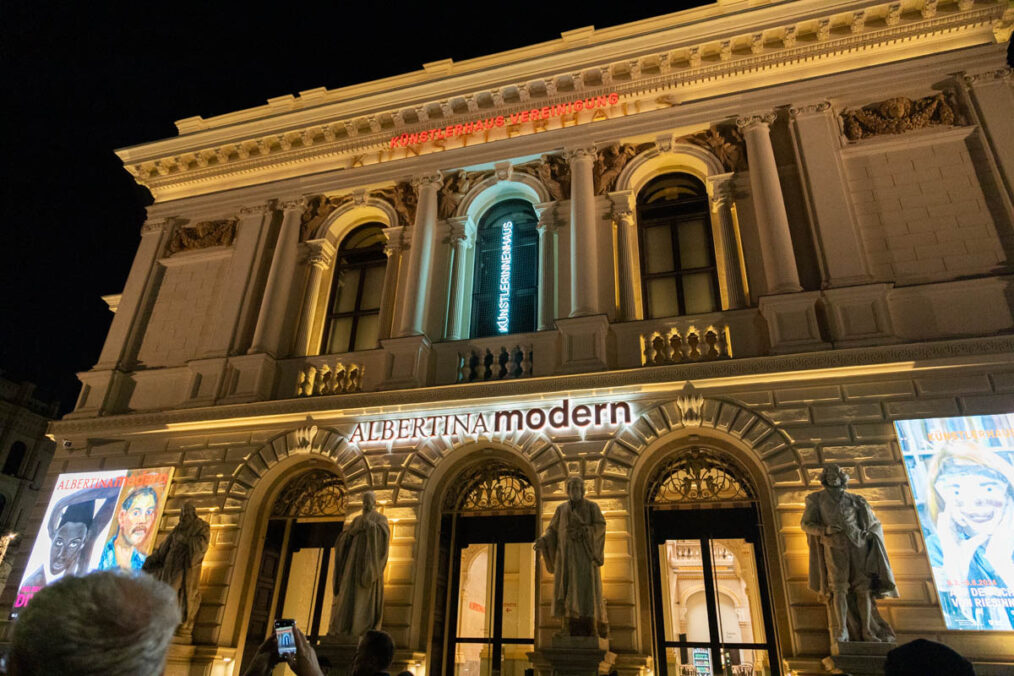
It´s time to rewrite history!
The Künstlerhaus, opened in 1868, hereby extends International Women’s Day to Women’s Month and establishes a new landmark in Vienna’s public space with the new typography Künstlerinnenhaus. It symbolizes a tribute to the past and present achievements of female artists and thus encourages future generations of women to raise their voices and take their place in the (art) world. It is a call for recognition and appreciation of the female perspective in all forms of artistic expression.
Billi Thanner previously created an unmistakable monument with her Heaven´s Ladder (Himmelsleiter), demonstrating art’s transformative potential. With Künstlerinnenhaus, she is now setting another example: It is a reminder that art is not only a mirror of society but also a driving force for change. „From my perspective, this should have happened 50 years ago, or even earlier. For me, it’s a matter of course – and I’m glad we can now do it together with my friend Ursula Simacek,“ says Billi Thanner.
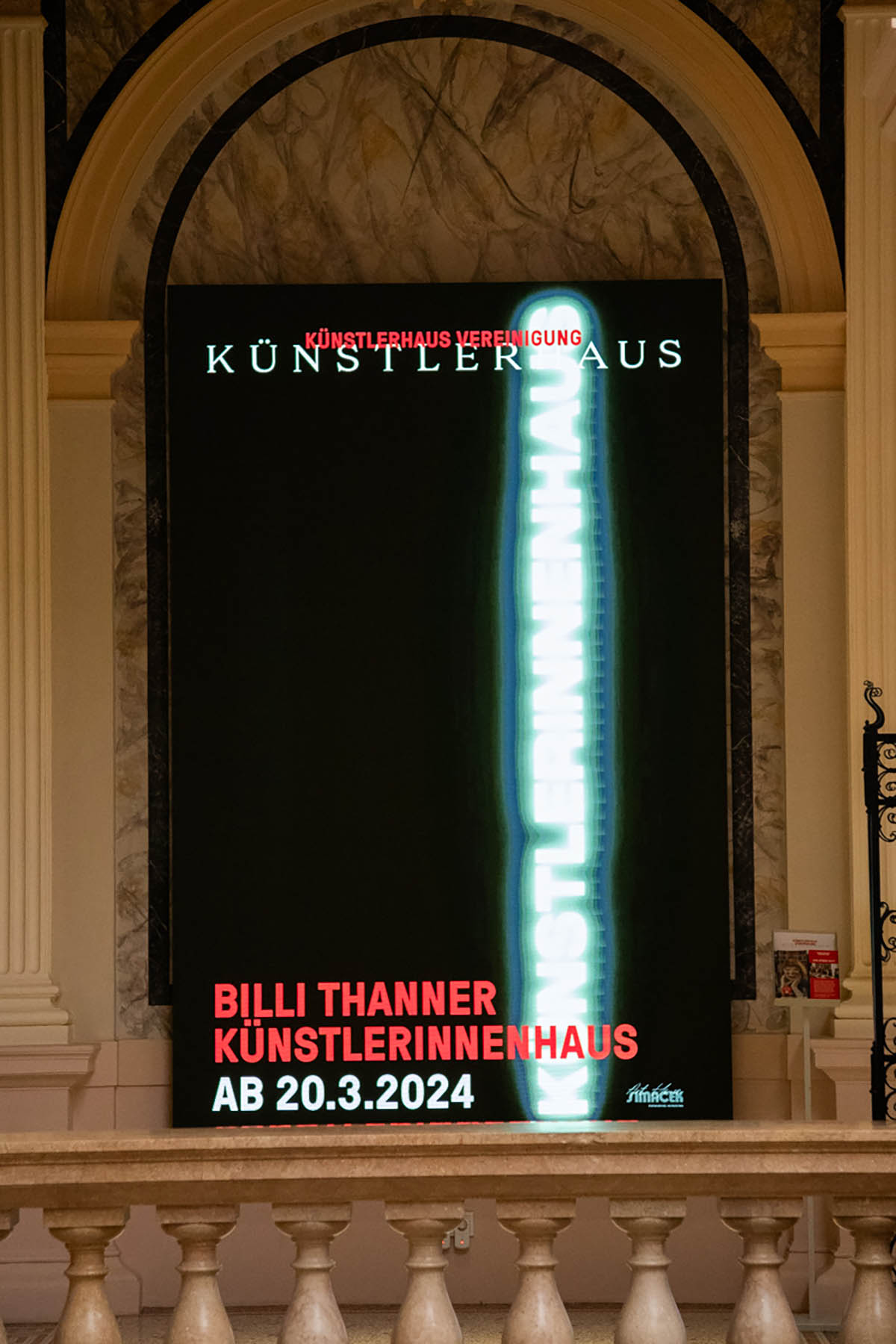
Given the current linguistic gender debate, Künstlerinnenhaus is an important statement. While various regions in the German-speaking world have declared war on gender, Künstlerhaus President Tanja Prušnik and Artistic Director Günther Oberhollenzer demonstrate political initiative. Although gendering has a long tradition in Latin and Slavic languages, German does not properly decline and conjugate.
The feminine is absent and, according to French psychoanalyst Luce Irigaray „a gender that is not one“¹ (1979). Although there have been significant changes since Irigaray – also regarding gender subjects – the German language is experiencing a political regression. This raises the question of whether the German language in general lacks space or whether the lack of declension is a deliberate political maneuver.
In this sense, making the feminine visible is a necessity and a symbol that challenges lazy grammar. It is a struggle that began in the first and second feminist waves and has not been completed since. This is evident in the Gender Gap Report 2023; Austria ranked 47 out of 146 countries, with economic gender equality between women and men estimated to take another 169 years.
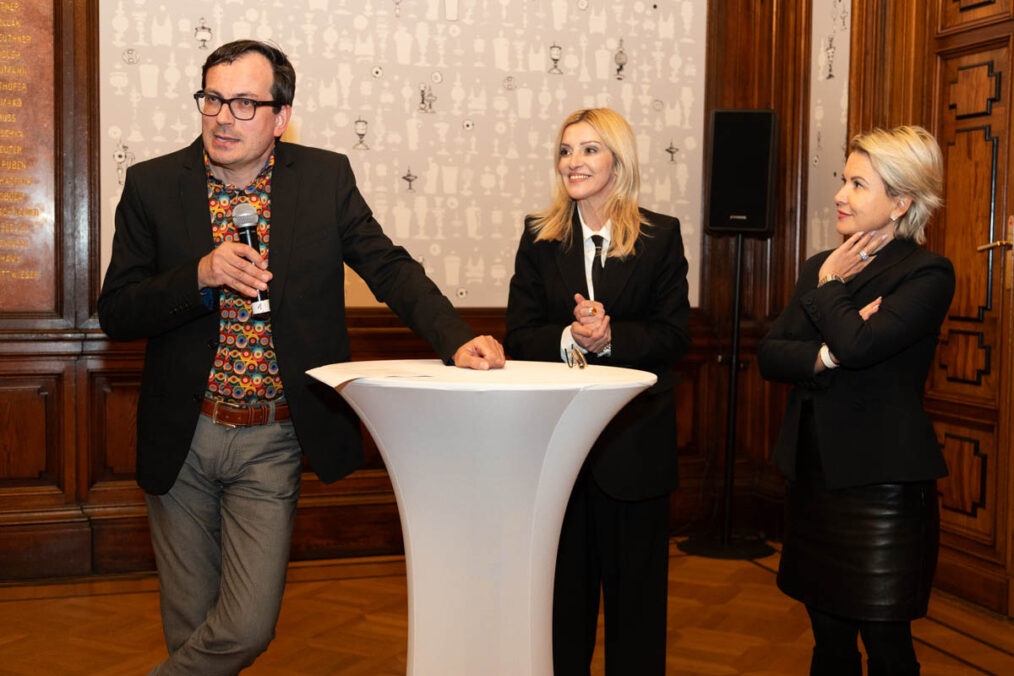
(c) Christina.Maria.Stowasser. CHRISMASTO Photography | Von LEADERSNET zur Berichterstattung zur Verfügung gestellt und freigegeben 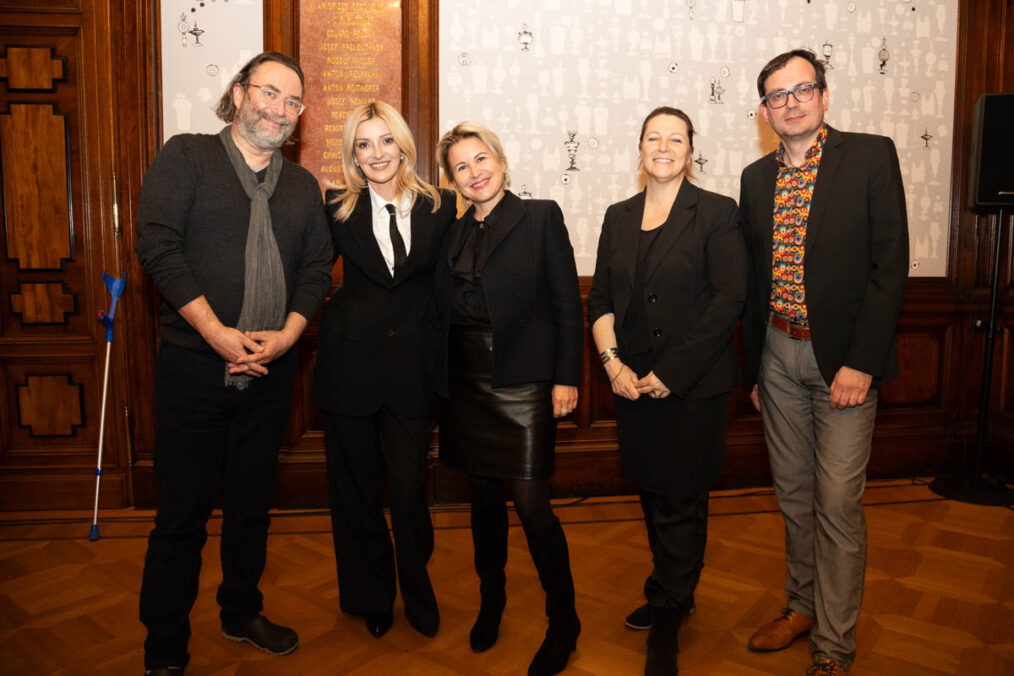
(c) Christina.Maria.Stowasser. CHRISMASTO Photography | Von LEADERSNET zur Berichterstattung zur Verfügung gestellt und freigegeben
The time has come, to make a change.
The visual and economic equality of female and male artists is another key issue. In this context, the poster by the Guerrilla Girls „Do Women Have to Be Naked to Get Into the Met. Museum? Less than 5% of the artists in the Modern Art section are women, but 85% of the nudes are female “ (1989) pointed to the existing disparity in the art industry. One could cite countless more examples; art history is replete with them.
This was and is indeed a long process that the Künstlerhaus joyfully supports. The proportion of women in the Künstlerhaus Association has significantly increased. „In my role as the first female president, I am pleased that today the proportion of women among the approximately 550 members of the association slightly outweighs men,“ explains Tanja Prušnik. Thanner’s artistic intervention is therefore not only an artwork but also a symbol of hope, inspiration, and change. It reminds us that each voice and action can make a difference and that we can all be part of the change we want to see in the world.
That´s one small step for a woman, one giant leap for mankind.
Billi Thanner has made art history with her light installation and enabled a collective continuation by literally writing it down. This shows the importance of language, as it defines our reality, and it requires supporters on all sides, such as Günther Oberhollenzer, who explains: „Empowering strong female artists and giving visibility to their work is a central theme of my content programming. Therefore, I am very pleased that we were able to engage Billi Thanner to design this typography, which shines in Vienna’s public urban space and can be interpreted as a statement for equality and female creativity.“
Perhaps, contrary to a political setback, one must live the utopia to enable a fairer future…
Billi Thanner – www.instagram.com/billithanner/, www.billithanner.at
Address and contact:
Künstlerhaus
Karlsplatz 5, 1010 Vienna
www.kuenstlerhaus.at
About the author: Marija Nujic (*1987) is an art historian and cultural scientist who specializes in performance theory and gender studies. In addition to serving as curatorial assistant for the Austrian Pavilion at the 2019 Biennale d’Arte in Venice, Nujic advocates for artistic and cultural projects that focus on various aspects of sustainability. Art spaces, with their architectural, historical, and socio-cultural characteristics, are at the center of her in-depth exploration, which moves between the artistic practice of artists, subversive and socio-political subjects, and approaches from the perspective of artistic and cultural theory. Nujic is particularly well-known for her publications and her close collaborations with the contemporary art scene in Vienna. www.instagram.com/marija.nujic/
¹ Irigaray, Luce, Das Geschlecht, das nicht eins ist, Berlin, 1979.



